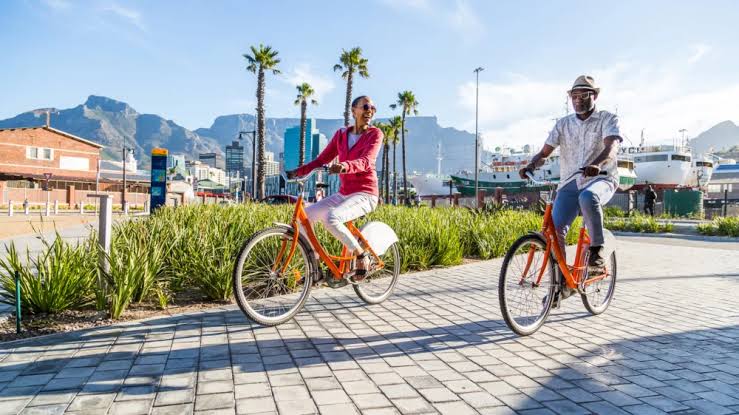In a groundbreaking step toward sustainable transport in Africa, the United Nations Environment Programme (UNEP), UN-Habitat, and the World Health Organization (WHO) introduced the continent’s first Pan African Action Plan for Active Mobility (PAAPAM) at the World Urban Forum in Cairo. The initiative, developed with the support of the FIA Foundation, marks a milestone in addressing transport inequalities and advancing climate-friendly, accessible transit options.
The Pan African Action Plan for Active Mobility offers Africa a unique opportunity to address transport inequality while promoting public health and reducing climate impacts.
The action plan, which involved over 1,300 stakeholders across Africa, outlines a strategic framework for enhancing walking, cycling, and non-motorized transport infrastructure. Designed to promote environmental sustainability, public health, and road safety, PAAPAM seeks to ensure that no group is left behind in the shift toward sustainable urban mobility.
Speaking on the initiative, UNEP Deputy Executive Director Elizabeth Maruma Mrema emphasized the wider impacts of active mobility. “Transportation is one of Africa’s highest-emission sectors, but supporting walking and cycling goes beyond reducing emissions. It’s about building safe, clean environments and fostering resilience in communities across urban and rural areas,” she said.
The launch of PAAPAM comes shortly after the signing of the Hamburg Charter for Inclusive and Just Mobility, a global agreement supporting equitable, climate-conscious transit solutions. The Charter calls for expanded public transportation and equal access to mobility.
Urgent Need for Safer Mobility in Africa
Africa faces pressing mobility issues. While the continent represents only 3% of the world’s vehicles, it accounts for 19% of global traffic fatalities, with a third of these deaths involving pedestrians. Walking and cycling are essential means of transport for many, but critical infrastructure—such as sidewalks and safe crossings—is largely missing.
Health data from the WHO highlights the consequences of this gap: air pollution, primarily from road traffic, caused over 920,000 deaths across Africa in 2019, including nearly half a million respiratory-related deaths.
“The action plan moves us closer to healthier, safer urban spaces,” said Dr. Li Ailan, WHO’s Assistant Director-General for Healthier Populations. “By promoting active mobility, we not only reduce climate impacts but also address a public health crisis affecting millions of Africans.”
Dr. Michal Mlynár, UN-Habitat’s Deputy Executive Director, called for collaborative efforts, citing examples from Addis Ababa and Nairobi. “Achieving sustainable transport goals means integrating walking and cycling into national and local policies,” he said. “Cities like Addis Ababa are leading the way with over 1,000 km of pedestrian and cycling pathways, and Nairobi has committed to investing 20% of its transport budget in non-motorized infrastructure.”
Three Strategic Pillars of PAAPAM
The Pan African Action Plan for Active Mobility aims to:
- Build safe, accessible, and comfortable spaces for walking and cycling;
- Advocate for pedestrian and cyclist rights and needs;
- Embed active mobility into policy, funding, and development strategies.
Saul Billingsley, Executive Director of the FIA Foundation, stressed the importance of equitable, accessible transport. “For millions across Africa, walking and cycling are daily essentials. Yet roads lack basic safety features. This plan is a social and environmental imperative,” he said. “It’s about creating safe, inclusive infrastructure that protects all road users and supports healthier, greener cities.”
Progress Across Africa
Several African cities are already advancing active mobility goals. Addis Ababa’s 10-year Non-Motorised Transport Strategy aims to achieve gender equality in cycling by 2028, with measures including safe cycle lanes and integrated bike parking. Quelimane, Mozambique, is improving pedestrian-friendly infrastructure, while Ghana’s Greater Accra has shown potential to reduce over 5,600 deaths and nearly 41 million tonnes of carbon emissions through active mobility initiatives over the next decade.
Starting in 2025, UNEP, UN-Habitat, and WHO will begin implementing the action plan across at least 10 African countries, with capacity-building projects already underway in Ghana, Malawi, Cameroon, Morocco, and Kenya.

